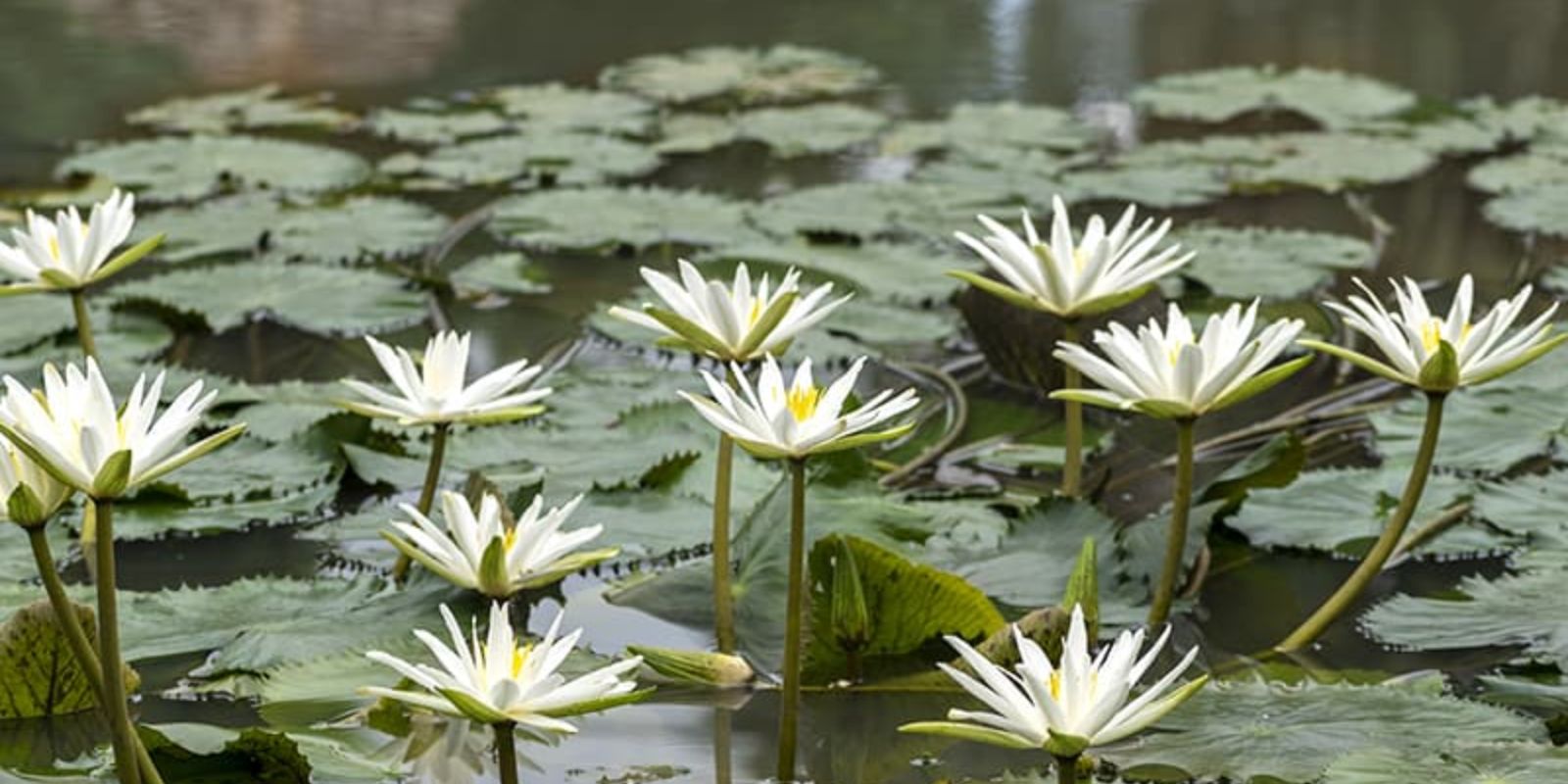Introduction
Adding flowering plants to your pond not only enhances its visual appeal but also contributes to the overall health and balance of the aquatic ecosystem. Flowering pond plants, ranging from water lilies to lotus, bring vibrant colors, attract wildlife, and provide essential benefits like shade and oxygenation. Whether you’re new to pond gardening or a seasoned enthusiast, understanding how to grow and care for these aquatic flowers will help you create a stunning and harmonious water garden. In this guide, we’ll cover essential tips for selecting, planting, and maintaining flowering pond plants.
Choosing the Right Plants
- Assess Your Pond’s Conditions:
Before selecting plants, evaluate your pond’s conditions. Consider factors such as sunlight exposure, water depth, and climate. Most aquatic flowering plants thrive in full sun, although some can tolerate partial shade. Additionally, ensure your pond’s water depth matches the requirements of the plants you choose. - Popular Flowering Pond Plants:
- Water Lilies (Nymphaea): Known for their large, showy blooms and round leaves, water lilies come in various colors and sizes. They prefer shallow to moderately deep water and need full sun.
- Lotus (Nelumbo): Lotus plants are admired for their dramatic flowers and large, distinctive leaves. They require a deeper pond, at least 12 inches of water, and full sun.
- Water Iris (Iris laevigata): Water irises are known for their striking, colorful blooms and are excellent for adding vertical interest. They thrive in shallow water and can tolerate partial shade.
- Pickerel Rush (Pontederia cordata): This plant features tall spikes of purple flowers and lush green foliage. It grows well in shallow water and can tolerate full sun to partial shade.
Planting and Placement
- Prepare the Pond:
Ensure your pond is clean and free of debris before planting. Check that the water is clear and the pH levels are balanced. The pond should have a mix of shallow and deeper areas to accommodate different types of plants. - Use Aquatic Plant Containers:
Most aquatic flowering plants should be planted in specialized aquatic plant pots or baskets. These containers help contain the plant’s roots and prevent them from spreading uncontrollably. Fill the pots with a heavy, soil-less planting mix designed for aquatic plants. - Planting Depth:
Place the pots in the pond according to the plant’s depth requirements. Water lilies and lotus typically need to be submerged to a depth where their leaves can float on the water’s surface. Water irises and pickerel rush should be planted in shallow water, with their roots just below the surface. - Spacing:
Ensure adequate spacing between plants to allow for their growth and prevent overcrowding. This spacing will also help maintain water circulation and reduce the risk of algae blooms.
Caring for Flowering Pond Plants
- Water and Fertilization:
- Water Levels: Maintain consistent water levels to ensure that the plants’ roots are submerged. Top up the water as needed, especially during hot, dry weather.
- Fertilization: Aquatic flowering plants benefit from occasional feeding. Use a balanced aquatic fertilizer designed for pond plants. Follow the manufacturer’s instructions for application rates and timing.
- Pruning and Maintenance:
- Deadhead Flowers: Remove spent flowers to encourage continuous blooming and prevent the plant from expending energy on seed production.
- Trim Foliage: Regularly trim dead or yellowing leaves to keep the plants healthy and prevent them from decaying in the water.
- Check for Pests: Inspect your plants for pests such as aphids or snails. If you notice any issues, take appropriate measures to address them, such as using natural pest control methods.
- Winter Care:
- Hardy Plants: Many aquatic flowering plants are hardy and can survive winter in temperate climates. However, it’s essential to cut back dead foliage and ensure that the plants are not exposed to freezing temperatures.
- Tender Plants: In colder climates, tender plants like lotus may need to be removed and stored indoors over winter. Place them in containers of water and keep them in a cool, frost-free location.
Common Problems and Solutions
- Algae Growth: Excess nutrients and sunlight can lead to algae growth. To combat this, ensure that your pond has a balanced ecosystem, including beneficial bacteria and plants that help compete with algae for nutrients.
- Disease: Fungal or bacterial infections can affect aquatic plants. Keep your pond clean, and remove any infected plant material promptly to prevent the spread of disease.
- Nutrient Deficiencies: Yellowing leaves or poor flowering can indicate nutrient deficiencies. Use appropriate fertilizers and amend the soil if necessary to provide essential nutrients.
Conclusion
Growing flowering pond plants is a delightful way to enhance the beauty and functionality of your water garden. By selecting the right plants, properly planting them, and providing consistent care, you can enjoy a vibrant and thriving aquatic landscape. Embrace the art of pond gardening, and let your water garden flourish with the colors and grace of blooming aquatic flowers. Whether you’re creating a tranquil retreat or a lively focal point, flowering pond plants will add charm and vitality to your outdoor space. Dive into this rewarding hobby and transform your pond into a breathtaking aquatic paradise!

